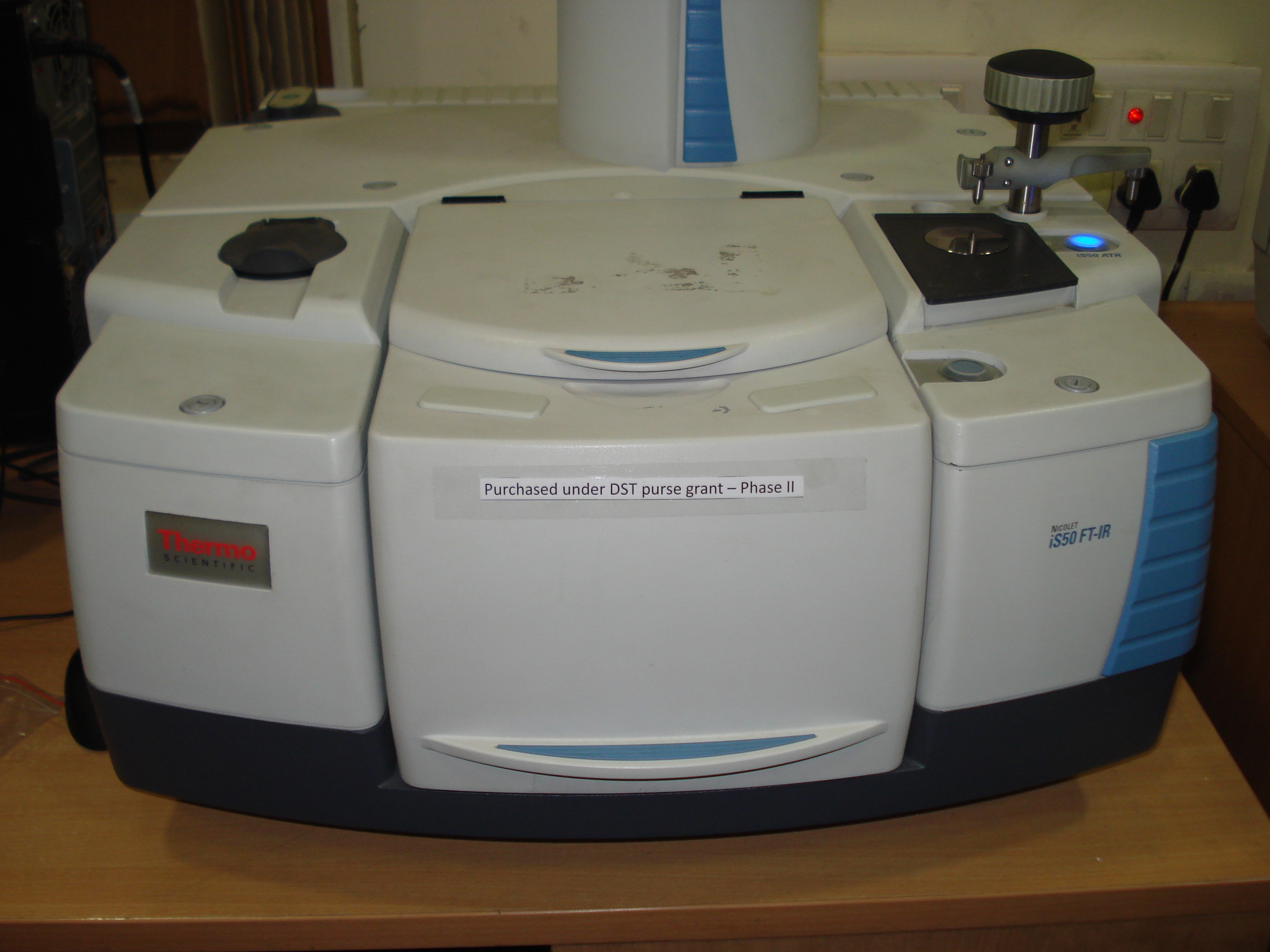
Fourier-Transform Infrared Spectroscopy (FTIR)
• Nicolet iS50 FTIR Tri-detector
• Gold flex spectrometer – Gold optics
• (0.09 cm -1 resolution),
• Automated beam splitter exchange MIR-FIR
• DLaTGS detector with KBR window
• Ge-on-KBr beam splitter (7800-350 cm -1 )
• 50 Build-in Diamond ATR module
• The scanning range will be 400-4000 cm -1
For any query related to the instrument,
Contact : Mr. Robinsh (9012977701)
- Category Spectroscopy Facilities
- Availability Available
- Share on
Instrument's Description
FTIR spectroscopy is a technique used to obtain an infrared spectrum of absorption or emission of a solid, liquid or gas. An FTIR spectrometer collects high-spectral-resolution data over a wide spectral range. This confers a significant advantage over a dispersive spectrometer, which measures intensity over a narrow range of wavelengths at a time. Attenuated Total Reflectance (ATR) is a sampling method that introduces light onto a sample in order to acquire structural and compositional information. ATR is one of the most used sampling technologies for FTIR Spectroscopy. The reason for the ubiquitous use of ATR is that it enables solids and liquid samples to be analyzed neat – simplifying the measurement of virtually all substances. In contrast with transmission (the other widely used sampling method), the measurement path length is independent of the thickness of the sample. ATR is an internal reflection-based method, and the sample path length is dependent on the depth of penetration of the infrared energy into the sample. A solid sample can be 100 microns thick or 100 mm thick and the recorded infrared spectrum will basically look the same. If a fluid or slurry sample is in contact with the ATR surface, the infrared spectrum of the liquid portion is recorded. It is this latter phenomenon that makes Attenuated Total Reflectance (ATR) so powerful for chemical reaction monitoring. ATR can measure spectra without the need for any sample preparations or dilution, ATR has found applicability in analyzing solid and liquid materials. One of the earliest uses of ATR was to obtain the infrared spectra of polymers samples and films.
Sample Description
What types of samples can you analyze?Excellent quality spectra can be obtained for many types of samples using transmission.
• Organic powders in pellet or mull form
• Thermoplastic powders
• Soluble polymers
• Thin polymer films
• Regular-shaped polymers (with preparation)
• Irregular-shaped polymers (with preparation)
• Dark polymer films (not carbon-filled)
• Liquids (free-flowing or viscous)
Pellet for FTIR samples
• 5 mg dried and finely grounded samples are required for analysis.
• Only powdered and viscous liquid samples (compatible with KBr) will be entertained.
Price List
| For Internal usage Per Hour | 160 |
| For Internal usage Per Sample | 30 |
| For External (Academics) usage Per Hour | 600 |
| For External (Industries) usage Per Hour | 1200 |

